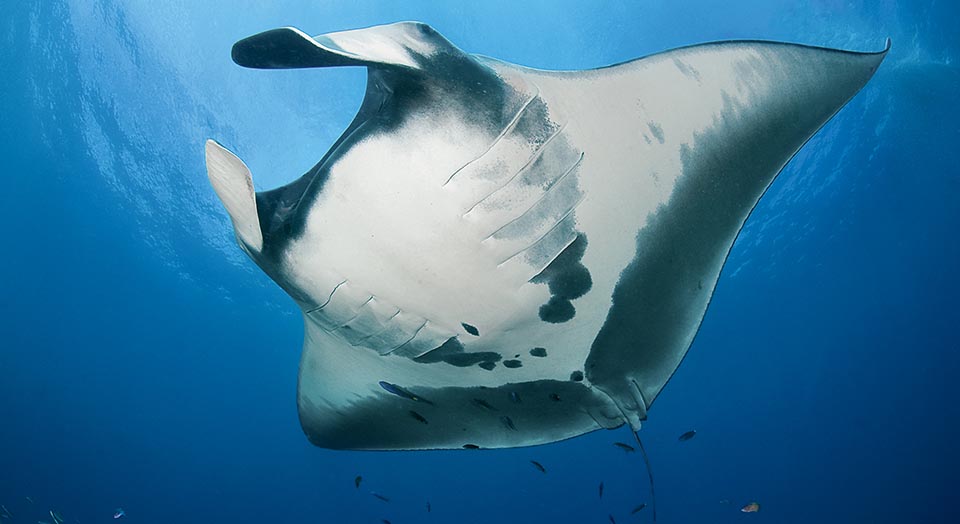Giant Manta Ray
 When a manta ray weighs as much as a Toyota Prius and has a 23-foot-wide wingspan—twice the size of the largest bird—calling it “giant” is an understatement.
When a manta ray weighs as much as a Toyota Prius and has a 23-foot-wide wingspan—twice the size of the largest bird—calling it “giant” is an understatement.
Giant manta rays have the biggest brain to body mass ratio of any fish—and can recognize individual divers by sight—making underwater “genius” a more fitting title. In addition, each manta is recognizable by the unique pattern it bears on its underside—like a human fingerprint.
Acrobatic and graceful, manta rays can leap from the water despite their 5,000 pounds. But all their moves are harmless. Their short tail has no barb and, although related to sharks, they have no teeth. To eat, they filter microscopic plankton, small fish and tiny crustaceans using their gill plates.
Unfortunately—because other species have become rare—some in China are now deceptively touting crushed and dried manta ray gill plates as a cure for everything from chicken pox to cancers. As a result, the gentle giants are dying for a small, but lucrative body part. Manta ray meat is of little value, but one pound of manta ray gill plates can be worth more than $300. And as fishermen wipe out shark species, they are targeting mantas as a substitute for shark fin soup.
This threat to the survival of manta rays comes on top of climate change, which is already wiping out the coral reefs that they depend on for vital feeding stations and breeding grounds.
Although manta rays can live 40 to 50 years—some scientists speculate as long as 100—the lives of these captivating, charismatic creatures will continue to be cut short if we don’t act intelligently to end the reckless and uncontrolled killing.
For more, visit defenders.org/giantmantaray.
Only select articles from Defenders are available online. To receive 4 issues annually of the full award-winning magazine, become a member of Defenders of Wildlife!


